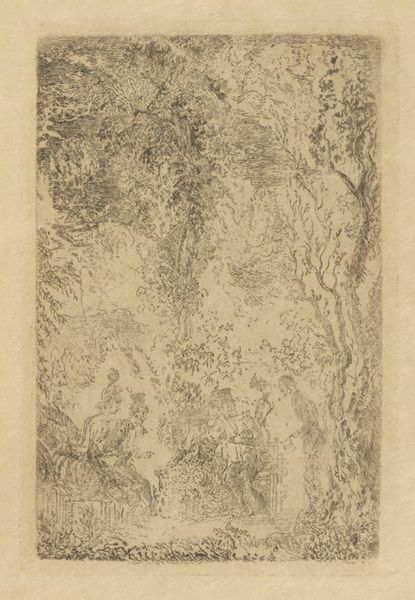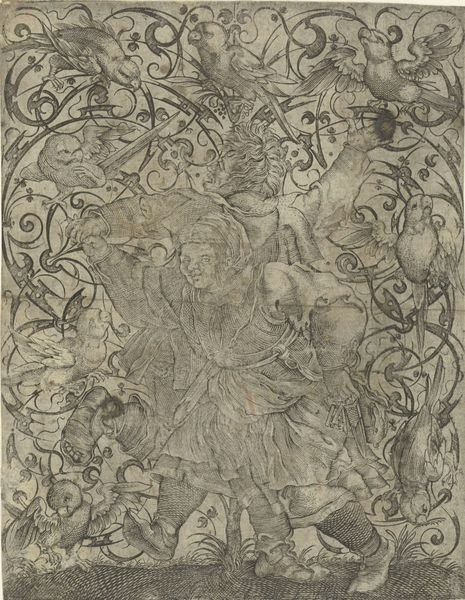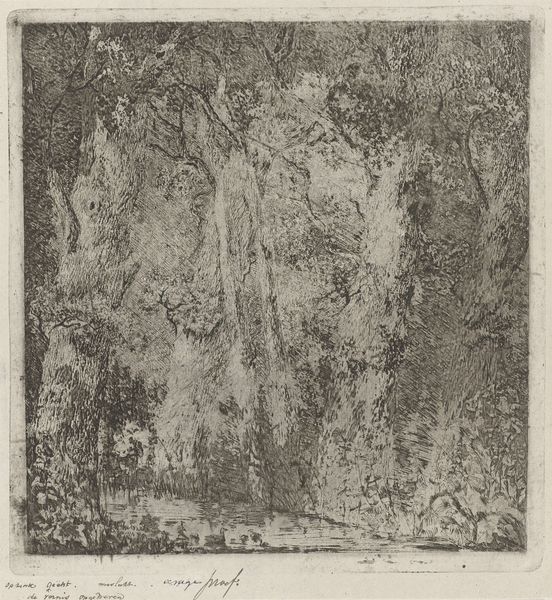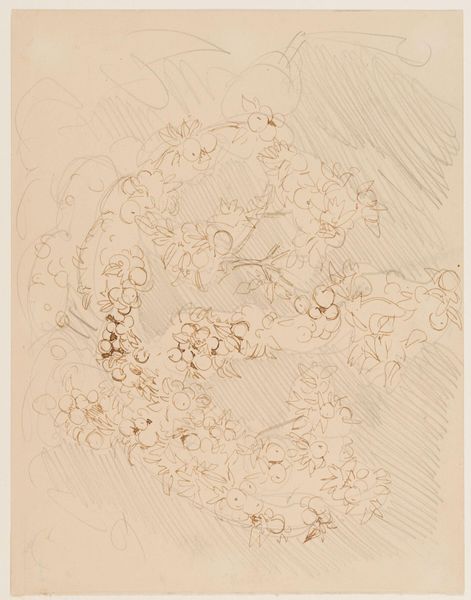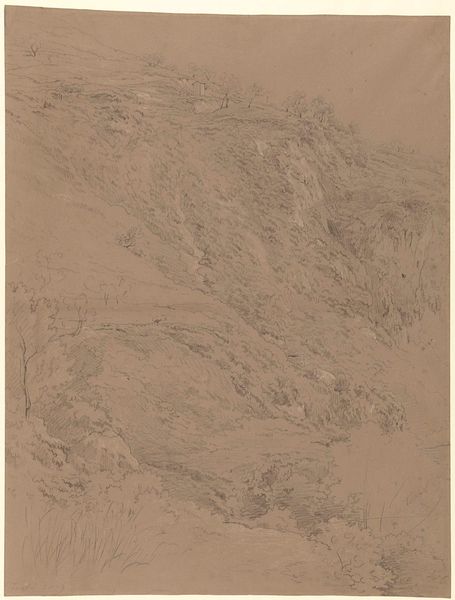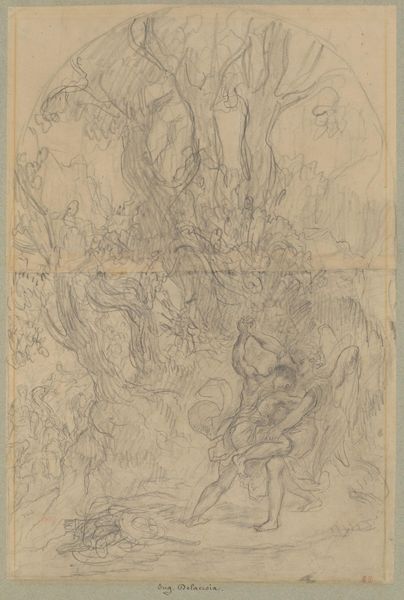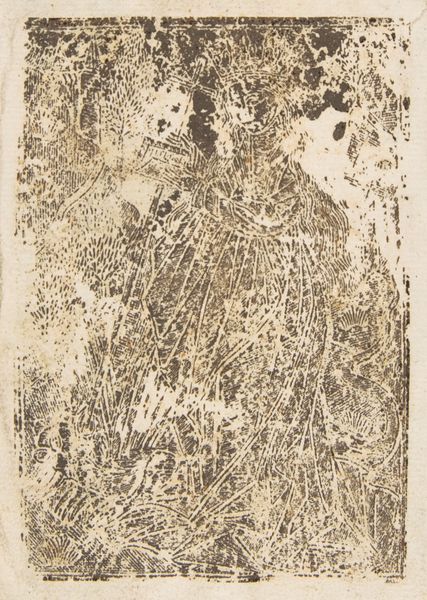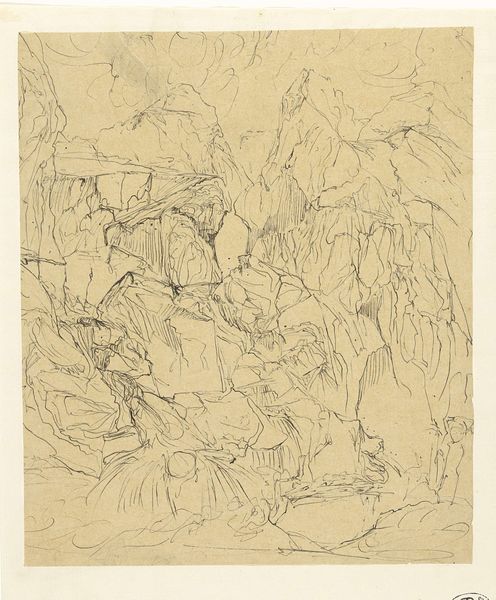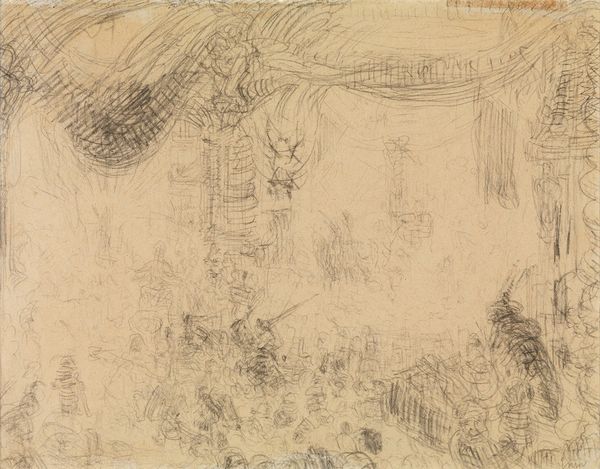
drawing, ink, pen
#
portrait
#
drawing
#
allegory
#
pen drawing
#
figuration
#
ink
#
romanticism
#
line
#
pen
#
history-painting
Dimensions: overall: 45.3 x 34.6 cm (17 13/16 x 13 5/8 in.)
Copyright: National Gallery of Art: CC0 1.0
Curator: Here we have William Blake’s “The Last Judgment,” rendered in ink and pen around 1809. Its allegorical composition presents a dense, almost overwhelming, vision. Editor: Overwhelming is right. My immediate sense is of a chaotic ascent – a swarm of figures struggling upwards towards... what exactly? It's intense, even claustrophobic despite the implied scale. Curator: Indeed. Blake grappled repeatedly with the subject of the Last Judgement. Throughout his career he believed existing visual representations served only to bolster social control rather than facilitate authentic experiences of divinity. We see here how Blake confronts conventions; note the sheer number of figures included in the drawing, it recalls his aim of rejecting the Royal Academy’s discouragement of large-scale history paintings. Editor: Right, I see how the densely packed composition acts as a critique. I mean, there’s an incredible contrast between those skeletal figures at the bottom and the ethereal, almost childlike ones near the top. It’s such a stark visual representation of, say, karmic debt or perhaps the uneven playing field of salvation. It makes you wonder about the institutional forces that influenced ideas of judgement in Blake’s day, and how those biases are challenged within the piece. Curator: Precisely. And let's also note Blake's artistic choices here. The dynamism of the line work creates this sense of perpetual motion – a swirling vortex drawing everyone in. The linearity we find so present throughout Blake’s production served the goal of transcending material reality through active perception, in his opinion, or vision. It speaks directly to the importance of vision in Blake's artistic and prophetic beliefs. Editor: I agree; those lines contribute so much energy. There’s an activist call, even a kind of manifesto, imbued in the artistic technique here. His insistence on active vision demands that we as viewers, too, must actively participate in deciphering these intertwined spiritual, social and personal realities. It almost demands that you adopt an individual experience over didactic authority. Curator: It encapsulates how Blake’s idiosyncratic visionary system served as a constant act of resistance against societal structures of power in late Georgian Britain. Editor: Which makes the drawing surprisingly relevant even now. Well, perhaps *especially* now. Curator: Indeed. Considering the era in which it was made, its thematic resonances concerning social justice make Blake’s “The Last Judgement” a poignant, provocative piece. Editor: It’s left me reflecting on not just the painting, but how it speaks to contemporary political tensions. It urges me to re-think art’s capacity to stimulate thought about social norms and individual beliefs.
Comments
No comments
Be the first to comment and join the conversation on the ultimate creative platform.

